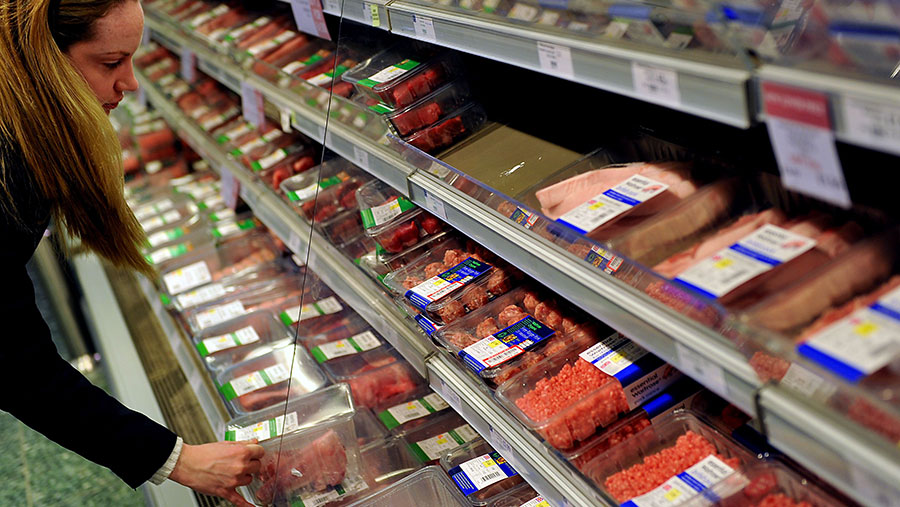Meat and dairy sales grow despite backdrop of Veganuary
 © Andy Rain/EPA/Shutterstock
© Andy Rain/EPA/Shutterstock UK shoppers bought more meat and dairy products in January than they did a year ago, with minced beef, cheese and milk proving an essential part of many consumers’ diet during the latest Covid-19 lockdown.
Latest figures from market analyst Kantar show retail volumes of red meat were up 15% and dairy also showed a strong performance – up nearly 12% compared with last January.
This is despite the annual Veganuary campaign, which encourages consumers to switch to a vegan lifestyle for the month of January.
See also: Red meat hits back in battle for consumer attention
Red meat and dairy retail sales have seen solid growth since Covid-19 restrictions were first introduced last March, with shoppers typically buying more meat and milk through supermarkets because of the closure of the foodservice sector.
Over the past 12 weeks, sales volumes of primary red meat rose 18%, with mince driving much of the growth, along with burgers, steaks and traditional roasting joints.
Dairy also saw significant growth, with shoppers buying an average of five litres more milk than they did in the same period before the pandemic.
Fresh cream sales rose by 21% and there was also growth in sales of regional and speciality cheeses, with consumers keen to explore different varieties of cheese to use in their cooking.
Meat-free growth
At the same time, strong growth has also been seen across meat-free and dairy alternatives.
Sales of meat-free products increased in volume by 13.3% during the last quarter, according to the data.
However, research shows that many shoppers are including meat-free within their repertoire without cutting out meat completely, as 62% of shopping baskets containing meat-free also contained a meat product.
Rebecca Miah, AHDB’s strategy director for beef and lamb, said the numbers reflected how highly valued red meat and dairy were to consumers.
“While alternatives show growth from a small base, these are mostly complementary additional purchases driven by interest and variety, rather than a move away from real meat and dairy consumption,” she said.
Meat-free remains a small category, at less than 2% of the size of meat, fish and poultry.
